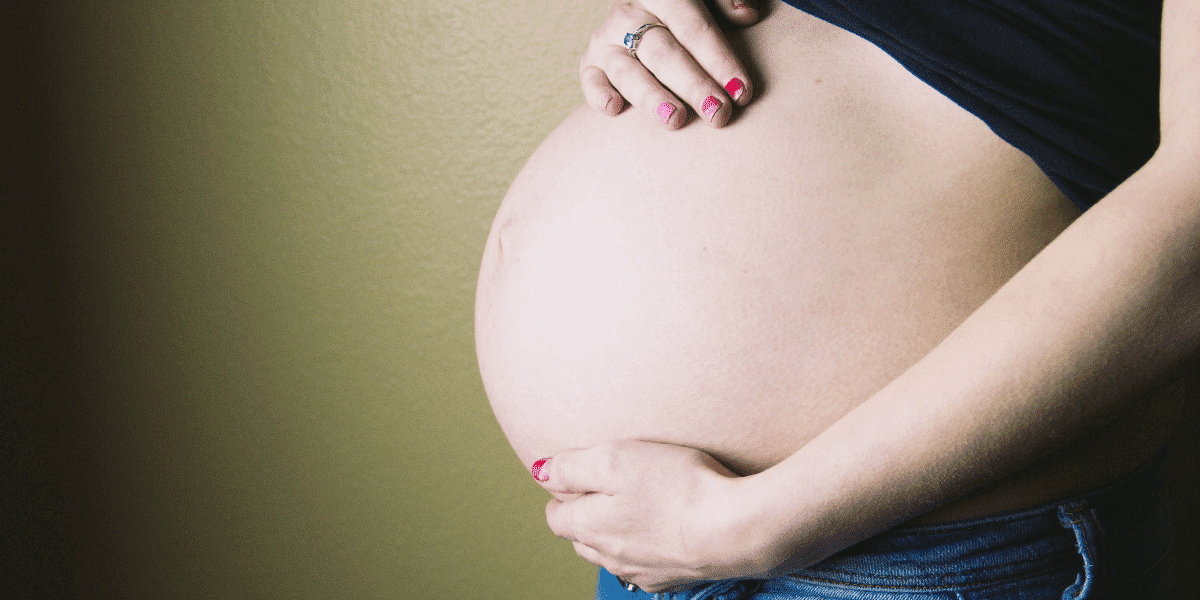The first thing you should know is that it is incredibly common for breastfeeding moms to have times when one breast may appear fuller or may produce more milk than the other, women may look in the mirror and feel uneven or lopsided and this can be a slight difference or a substantial one.
Uneven supply isn’t anything to worry about at all, but the appearance of asymmetry may bother some women, and depending on the cause, there are things you can do to help even the situation.
We got you, Mom!
As an Amazon Associate I earn from qualifying purchases. The links below may be affiliate links. Please read my disclosure policy for more information.
What Are the Causes of Uneven Milk Supply?
The reason for one breast looking fuller than the other is because it usually is: if your baby favors feeding on one side then that breast will be drained more frequently and refill a greater volume than the other.
Breast preference isn’t necessarily a problem, but it might mean the other less used breast starts to naturally produce less milk. Babies are creatures of habit and do sometimes just have a preferred breast, or one nipple may be an easier shape to latch on to than the other or the milk could actually taste different on each side.
The same issue with unevenness can also occur because without even realizing it, moms can have a natural side preference when feeding. It is particularly common if there’s been discomfort with latching on one side.
Another cause is if one breast has a more forceful let down than the other, this can make your baby pull away and become fussy when feeding that side and create a pattern of preference.
It’s the age-old case of supply and demand. When one breast has less demand, it will supply less.
Another reason for an uneven milk supply might simply be anatomy. We’re all different shapes and sizes on the inside as well as out. Some women have a difference in the amount of tissue where milk is made within the breast, there isn’t anything that can solve this, unfortunately!
Breasts are not twins so they will both be different in lots of ways. It’s just nature!
You should also consider previous surgery or trauma to breast tissue, this can also be a reason for smaller milk production, you can speak to your health care provider or lactation consultant about this if you have any concerns regarding a previous injury to the breast.

What Can You Do to Remedy Uneven Milk Supply?
The easiest way to remedy one-sided fullness is to start the feed on the less full breast and let the baby feed as long as possible on that side before switching, this will encourage that breast to empty and refill and stimulate production.
You can also express milk with a pump or by hand from the low supply side, this is helpful if your baby is not wanting to latch on to the affected breast or if they can’t due to nipple shape/size.
You can also use extra pumping sessions as a route to increasing milk volume, combining expressing with a hand massage or warm compress or shower may help even more to boost the supply.
Making sure both breasts are regularly being emptied either by feeding or expressing will prevent your supply from dropping too low or being interrupted.
A top tip to help mom remember which breast she last fed with is to put a hair elastic on the wrist of the side that was fed from last and then swap it over as you change sides each time.
It’s an easy way of keeping track, especially if your baby is feeding a lot and swapping sides often.
Another thing to do is to go back to basics and reassess holding positions for feeding and latch, or if you can, let your baby feed on demand from both breasts to boost overall supply, this is sometimes known as a feeding vacation where Mom and baby take to their bed with no plans apart from establishing a good feeding routine and bonding.

Will Your Baby Still Get Enough Milk?
Yes! Your breasts are very clever and work as an amazing feeding double act, if one starts producing less milk, the other will pick up the slack and make more to satisfy and nourish your baby, however hungry they are.
As long as your baby is gaining weight and is having wet diapers and is appearing satisfied after feeds, you have nothing to worry about on this front. Keeping an eye on your baby’s weight at check-ups can help to put your mind at rest.

When Should You See Someone About Breastfeeding Issues?
Whilst an uneven supply is nothing to worry about, and some discomfort can be normal during the beginning stages of breastfeeding as you’re getting into the swing of things; there are certain things you should always see a healthcare provider or lactation consultant about when it comes to your breasts.
Taking the time to get to know what is usual for you is important and allows you to quickly spot if anything is different.
Blocked Milk Duct – If you notice a hard lump in your breast when feeding, it is likely to be a blocked duct. You can try gently massaging it, applying a warm flannel to the area, or running a warm shower over it.
Keep feeding from that side or express with a pump, it might unblock by itself but there is a risk of developing mastitis.
Mastitis – Mastitis occurs when a milk duct in the breast has become blocked and infected, it can make women feel like they have flu and should always be checked out by a professional. If you think you have Mastitis, try to keep feeding on the affected side but get checked.
Symptoms include headache, fever, chills, and swelling or hard wedge sections within the breast combined with burning pain, if left untreated Mastitis can turn into a breast abscess which is serious.
Breast Abscess – If Mastitis isn’t treated properly, an abscess around the infected duct can form, this may need surgical draining and can make mom very unwell and even lead to sepsis.
Whilst abscesses are thankfully rare, you always fall on the side of caution when getting potential infections in the breasts checked, especially when you’re a breastfeeding mom, bacteria can enter the body through a cracked nipple without realizing.
Sore or Cracked Nipples – It’s best to get on top of this one as soon as possible, it will make your breastfeeding journey a lot easier if you can.
It’s likely to be caused by latching issues which are usually quick to solve by working with a lactation consultant, however, if cracks appear they can get infected.
A lactation consultant can advise on the best position to feed your baby in and how to get a good latch, there are also many breastfeeding support groups around that you could drop in to for advice.

Try giving your breasts plenty of time to air every day and wear comfortable breast pads to absorb any leaked milk, make sure wet pads are changed regularly and if cracking does appear, a few drops of breastmilk on them will help to soothe and protect the skin.
Thrush – If your nipples do become cracked, this can lead to thrush which is caused by Candida, it is also possible to develop it after having antibiotics and you and your baby can pass it to one another when feeding.
If you experience itchy, sore nipples after feeding or your baby develops white patches in their mouth and seems unsettled or in discomfort, please make sure to see your healthcare provider for treatment.
It is easily treated with an antifungal medication but needs to be dealt with promptly as both mom and baby need treating to break the cycle of reinfection.
Lumps, Pain, Discolouration, discharge, or Skin changes in your breasts should always be checked regularly and this doesn’t stop when breastfeeding.
Getting to know your anatomy and carrying out your usual breast checks should still be done during pregnancy and breastfeeding, and any changes reported.
Whilst most lumps and bumps are harmless, any that are problematic need to be caught and dealt with swiftly by a healthcare professional.

Your breastfeeding journey is unique to you and to your baby. By making sure you’re both comfy, well-hydrated, and support you’re giving yourself the best chance at a happy, successful story.
Simple things like sitting back with some soothing music in your favorite comfy chair and really getting to know your body and your baby will really boost that relationship between you both and keeping a journal or diary of anything you notice or feel at the time can be a great way to notice anything changing or any issues arising, it can also be a wonderful way to make memories for looking back on.
Try not to worry, you’ll know if anything isn’t right and there is plenty of support out there for you, enjoy this time.
You’ve got this mom.






